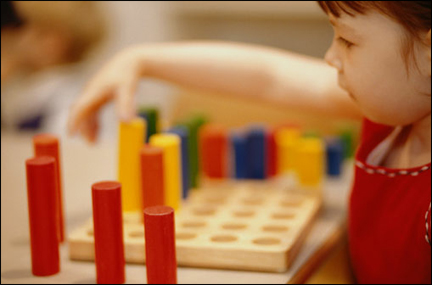For years, educational experts have parked themselves in classrooms in an attempt to understand how the pint-size set learns. Now a team of engineering and educational researchers at the University of California at Los Angeles is taking classroom observation high tech. Under the direction of electrical engineering professor Mani Srivastava, they’re using RFID-like technology to see how kindergartners interact with each other and various objects, and how their behavior affects academic performance.
The Smart Kindergarten project equips the kids and their playthings with electronic sensors that relay data via a wireless network. The idea for the project came to Srivastava a few years ago, as he observed his young daughter playing with a wireless Barney toy that interacted with software on a PC.
|
|
Each child wears a cap containing an “iBadge,” a small circuit board that includes a microphone, localization sensor and temperature sensor. The kids play at “Smart Tables,” which track and identify multiple objects placed on their surface. Printed circuit boards embedded in each table can “sense” the movements of toys, puzzles and board games that researchers have tagged with magnetic labels.
Custom software processes the iBadge and Smart Table data and stores it in an SQL database. Srivastava and his associates can view graphs and charts that help them see patterns and relationships. “The system provides insights that would never be possible with human observers,” says Srivastava.
Srivastava sees other potential uses for the technology. It could, for instance, give biologists and zoologists new insights to forest and desert ecosystem, and help transportation engineers make sense out of driving patterns. Some analysts envision that one day RFID systems—coupled with low-cost temperature and motion sensors, tiny microphones and video cameras—will provide similar capabilities at a fraction of the cost.


